My Dear Sarah, The Reason For My Stories
Those of you who know me, or who have read my book, know that I came home one day from work, eager to tell my dear Sarah all about my day. But on opening the door, I did not hear her usual cheerful greeting. I went inside, and found my love sitting in her wheelchair, at the door to the bathroom. She told me she'd been waiting there for me for a while, got up, took a few steps toward me, and collapsed.
The loss of the love of my life not long after almost did me in. But writing, and my dear Sarah, wound up bringing me back to life. I hope you, too, find inspiration in the power of writing to heal. And even, in time, recover your own zest for the adventures life brings.
0 Comments
Sam Street's Mystical Rescue
Join us for an unforgettable journey as Chester recounts a mystical rescue adventure led by the legendary Sam Street during the Grand Canyon expedition. The trip took an unexpected turn when part of the group found themselves stranded in a hanging canyon with no way down.
As the adventure unfolds, we learn just how mystical Sam really is, and another reason why he became such a legend. The full story is in Chester's book, From The Potato to Star Trek and Beyond. In this video, Chester shares a riveting story from his first trip down the Grand Canyon in 1974, another time when he almost got killed. A bit of background, from "The Cliff," in his book:
"Sam was average in height and deeply bronzed. His long, well groomed, sandy hair hung down almost to his waist and his face was swathed in a similarly long sun bleached beard. He wasn't wearing much — a ragged pair of gym shorts with patches of skin showing through, and a colorful bandana tied over his head. There was little to distinguish this Trip Captain from the rest of his piratical appearing crew. Except for his crown. Snugged down over his bandana was a large, battered, broad brimmed hat of dubious origin and considerable character. "Legend has it Sam was moseying down the road one day when he came to an intersection with a sign reading Sam Street. This, he thought, was a most excellent name. So he went to the Court House and became Sam Street... "This trip we were on was all about The River — the Colorado River. We were gathered, nearly five decades ago, under Sam's leadership for a voyage through the depths of the Grand Canyon. Sam's command was a small fleet of inflated rafts powered by long oars. O.A.R.S. — Outdoor Adventure River Specialists — was the name of the renowned whitewater river rafting company. Excerpt © 2023 Chester L. Richards. From "The Cliff," story in From The Potato to Star Trek and Beyond: Memoirs of a Rocket Scientist. All rights reserved. #adventures #whitewater #ColoradoRiver #GrandCanyon #video New Video - Sirens on the OmoEmbark on a mesmerizing journey with Chester and Ina as Chester recounts a unique musical experience during an expedition in Ethiopia. Chester shares a captivating story from his expedition down the Awash River in Eastern Ethiopia, a region known for its rich paleontological history.
New Video - Professor Pellam's Fabulous Fish Tale
Welcome back to Adventures with Chester L. Richards. Dive into the captivating story of Professor Pellam and his unexpected adventure during World War II.
In this episode, Chester recounts a tale from his time as a graduate student in the 1960s, working in the laboratory of the eminent physicist, Professor John R. Pelham. And a mysterious episode "Johnny Pellam" told Chester about. A rocket scientist adventurer ponders what will kill you
Out of darkness comes hope, and out of hope comes an unexpected passion and renewed sense of life ... if he can keep himself alive long enough to enjoy it. Rocket scientist/Star Trek writer/safari warrior/author Chester L. Richards asks: Is nature out to kill us? Maybe not. But someone is.
-Ed., The Mensa Bulletin, March 2023 I’m like a pinball in a pinball machine. I get knocked about a lot. I have been highly entertained and challenged by this, engaging in near-impossible tasks as an engineer on the aerospace frontier. Even better, bouncing around my somewhat eccentric career, I have met some of the most extraordinary people. But sometimes being a pinball hurts — a lot! Read more in the March 2023 Mensa Bulletin. A huge thanks from Chester for the delightful graphics they created to illustrate perfectly how his life has ricocheted through adventures personal, professional, and both mind- and soul-expanding. The Man Who Co-Wrote Star Trek Episode 'The Tholian Web' Goes Hollywood...Again
Immediate Release Brentwood, CA, Sept. 10, 2022. Chester L. Richards Surrounded by Lady Wrestlers at 2022 DPA pre-Emmys Event? Amazing! Chester, the most voluble of storytellers, actually was a bit tongue-tied by the bevy of beauties from Total Divas. We wonder why. It was a day full of fun at the exclusive DPA pre-Emmys event. And the moment in this pic was one of the most special. Kandi Krush, on his right, impressed Chester with the firmness of her lady wrestler grip. And being surrounded by the bevy of beauties...well, you can see for yourself.... See more photos on our home page, and more are coming soon showing Chester with a slew of talented actors, writers, producers, creators and other behind the scenes folk who make the magic happen onscreen. Reporters and influencers also brightened the day and are in photos to come. The people whom we met were a diverse lot indeed, and all had their own fascinating stories of course. Chester's proud to say many seemed genuinely intrigued when hearing about the tales in his book. In fact, that stack of books had greatly dwindled by day's end. From the author on his adventure at the DPA swag bag event two days before the 2022 Awards were announced and presented: "What an eye-opening experience. Another adventure. My editor tells me I'll be writing about it one of these days. Meantime, wishing luck tonight to the brilliant nominees." -- Ina Hillebrandt, Publisher, Pawpress Press Contact: Desiree Duffy #dpasuites #awardsseason #dpasuites #nominees #presenters #giftbags #moviestars #entertainment #BCE #booksthatmakeyou DPA GROUP #booksignings #KandiKrush #LanaStar It had been a good day at work, a day of considerable achievement. I was looking forward to telling Sarah. The last few weeks had been hard on her. She was recovering from a fractured pelvis, and the pain had visibly weakened my Sarah. The news, I hoped, would give her some pleasure.
After the long drive from work, I finally arrived home. Odd. No cheerful greeting. Something was wrong. I found Sarah sitting in her wheelchair at the entrance to the bathroom. She had been there a long time, she said, waiting for me to arrive. She got up, took a few steps, collapsed and lay still. No doubt it was only a few minutes before the paramedics arrived, but it seemed an eternity. I knew Sarah’s heart had stopped and time was now against her. The paramedics did get her heart going again, but as one of them turned to look at me, his expression, and a slight shake of his head, filled me with dread. At the hospital I waited in the Chapel while the staff worked to stabilize Sarah. Time passed. The head physician came to get me. His pessimism was apparent. For a long while I stood beside my beautiful wife’s silent form, talking to her, telling how much I loved her. She seemed to respond to my voice, but it could have been an illusion. Soon the staff told me to go home and get some rest. I turned on every light in the house. It didn't give me much comfort, but it was better than the dark. Later in the evening the hospital called. Sarah's heart had stopped, but they’d managed, once more, to get it going. They asked for instructions. I told them if it stopped again they were to let her go. But her heart continued strong and steady. Much earlier I’d called Paul, her son by a previous marriage. He’d immediately started south from San Francisco. I expected he would arrive sometime around midnight, or shortly thereafter, so I stayed up waiting for him. In the morning I awoke from a short sleep on the sofa. Paul had still not arrived. Another worry. Mid-morning Sarah’s son showed up. He had been so tired on the drive south he pulled off the road and slept through the night. Good. Better late than worse. We talked. He had not realized how serious the situation was. At the hospital I left Paul alone with Sarah. He had many things to say to her. A couple of hours later he found me, and we stayed with her together. Shortly before the end a priest arrived to give last rites. Sarah’s blood pressure slowly began to fade. The attending nurse had briefed us, so we knew this was the end. The inevitable continued until only the oxygen machine was still pumping her lungs — simulating a life that was no longer there. I turned it off. Paul could not bear to stay. This place was now a nightmare. He headed north to be with his family. Alone in agony, I wailed, and wept long into the night. There was much to do the next day. Work had to be notified and business put on hold. A funeral had to be arranged. A gathering planned. A grave and gravestone had to be purchased. Friends had to be notified. The day passed quickly. Exhausted, I slept, but not well, that night. The next morning it really hit me. The house was empty. It would always be empty. Half of me was gone. I had been sliced in two, from the top of my head on down. I was deep in shock. There are no words to describe the experience. No language is capable. If you have suffered the like no words are needed. You know. If you have not, you simply cannot comprehend. One thing was clear, I could not stay here. I fled. My colleagues at work were shocked to see me. I couldn't explain. I needed to be someplace different but familiar. Most of all, I needed the human companionship of my collegial friends. I felt a certain relief being in my office, and tried to work on my project. The nature of my work as an engineering physicist often requires intense focus. This concentration was now out of the question. I couldn’t do a thing. At least, though, I was in a place of comfort. Sarah was universally loved. At the upcoming funeral our friends would want some reminders of her life. That was my task. I sat for a while, remembering the stories she had told me about the years before we met. I remembered the many things we had shared. Yes, there was much I could report to our friends. Much, but not all. Many things were just between the two of us. I sat in my office and began to write. I wrote A Great Lady. I told about Sarah’s early life and gave some hint of the troubles she had experienced. I wrote of her talents and triumphs. I wrote about things we had done together. I told of the great privilege I had had spending so many years with this wonderful woman. I wrote my love. And as I wrote, my mood lightened. The days passed. Friends from all over came to the funeral. It was good to see everyone again. We talked, we told stories, we laughed, we cried. We said farewell to the one we all loved. All gave me comfort. All gave me their love. After this brief bright moment I sank back into darkness. This depression, I knew, would be fatal. And I knew I must find some way back up towards the light. While I brooded over the question of how to move forward, the warmth I had felt when I wrote my eulogy flooded through me. I knew what to do. Sarah liked my stories. She liked to hear of my travels to exotic places, of my challenging and rewarding experiences as an aerospace engineer. Most of all she liked to hear about the people I’d met along the way. Many times Sarah said I should write these tales. I never did. I never wanted to, but now I needed salvation. If writing would put me on the upward path, I would write. I would write stories drawn from my experiences. I would write in memory of Sarah. Writing worked. I began to heal. Each story is a letter of love to my dear Sarah. Each is an adventure. Each stands complete by itself. Each is meant to entertain or inform. Each is true. Photo and story "Overture", From The Potato to Star Trek and Beyond. © 2022 Chester L. Richards. All rights reserved. With luck life gives you a first love. Sometimes life is generous and gives you multiple first loves. With me it was Linette, my pal in first grade. Then beautiful Becky, in eighth grade, who I could only admire from afar — she entered a convent. College presented me with spectacular Carla and radiant Kathy and dear Dianna. Then came my true life love, Sarah, who I wooed, won, married, lived, lost and buried. Well, there can be other types of love — maybe affection is a better word – in one’s life. How about one’s first automobile? Actually not. It was my second that I developed a well-deserved affection for. Car culture. I grew up in the heart of car culture: Southern California in the 1950’s. Naturally you adopt the culture around you, so I did. During my teenage years I lived in the upscale neighborhood of La Canada and nearby Flintridge. My family was not yet prosperous so I was the “poor” kid at school. When my friends drove their shiny new cars to school I joined in the collective admiration of their beauty. But I could only admire them as abstractions. All I had was my bicycle and that would have to do for now. Still, a bicycle was transportation and it could go places a car couldn’t go. I exploited that different kind of freedom for I had the trails. Immediately behind our newly built tract home was a bridal path. This led up the hill past two equally new houses into wilderness then snaked around Gould Mesa, descending near the parking lots of the still new Jet Propulsion Laboratory and terminating in Oak Grove Park. It was this route I took when I headed on bicycle excursions up Arroyo Seco Canyon, and its trout laden stream, riding deep into the San Gabriel Mountains. One day I was cascading my way down the JPL parking lots when I came upon a marvel. From a distance it looked like a toy, something you might find under the Christmas tree. It wasn’t, but you had to get close to be sure. It was a small, bulbous, beetle-like thing, quite unlike the streamlined, tail finned, vehicles that America was then producing. Into its back was inserted a large windup key. When you got close you could read instructional placards – one in German, the other in English. These instructed the operator to firmly hold the wheels while winding up the motor lest the wheels spin out of control. This was my introduction to the soon to be notorious Volkswagen. The car was perfectly functional and became something of a celebrity around town. It also wittily opened the door to California’s car culture and therefore to VWs acceptance into America. A dozen years in the future I was to become well acquainted with this critter. In still developing La Canada, new cut roads were being paved and more houses built, spreading civilization ever upwards towards the looming mountains. The first summer we were in our new house we gathered with our neighbors to construct a tall, steel reinforced, concrete block retaining wall. This, to keep three of the houses across the street from washing away in the expected heavy winter rains. The spirit of this land was still a bit of the Old West. Neighbors still helped each other out as they had done during nineteenth century barn raisings. I helped dad with constructions around our new home. We built brick walls to isolate our yard from the bridal trail and provide privacy between our adjacent houses. Dad cut a doorway into the lower wall of the house and together we laid a concrete floored basement and workshop. A carport was built after my colicky sister was born and the garage was converted into a suite for me so that I could get some sleep during my high school years. The old house, and all we put into it, is gone now, replaced by a Persian Palace built by an Iranian import. The value was in the land not in our wood and work. That’s okay. A house is a kind of tent. You pitch it to keep shelter and memories. When you leave you may keep your memories but the tent is folded. The land now belongs to someone else. The year I finished high school my parents bought a new house in the hilly Chevy Chase district of Glendale. That was a good place for my sister to grow up – good schools, good neighbors, quiet – except for the Great Glendale Fire of 1964 which burned off our back yard and dozens of homes across the city. The fire also temporarily inconvenienced the family of coyotes that lived in the chaparral beyond our patio and shared our property with Samantha, our orange tabby cat (her job was to keep the field mice out of the garage and understructure). In the beginning I wasn’t there much, spending my time at Berkeley picking up a degree in physics. Summers during those undergraduate years I borrowed Mom’s car to get to my summer jobs: electronic assembly, laying up fiberglass plastic, and one summer working as a technician at JPL. Physics is limited as a profession without an advanced degree. But graduate school takes money and the family budget was being devoted to the education of my sister. The solution was for me to work for a while as an engineer and save up money for my further education. I stayed with my parents, and paid them room and board, during two years before I went off to graduate school. I found a job in the Advance Design Department of an engineering company in distant Monrovia. It was a long commute in the days before freeways but the job could not have been better. This was a group of professional inventors and I was being trained as an inventor. During the job interview my unorthodox approach to the world had attracted their attention and they scooped me up. What luck! I needed a car. A neighbor sold me his old Nash for a couple hundred bucks. It wasn’t much, and it required a lot of maintenance, but it was cheap and got me to work. After a year I had enough money to buy a proper new car so I started looking around. I was now working on military projects. And, I was learning from my new colleagues what was good engineering and what was bad (there is a lot of bad engineering!). Military engineering is special and expensive because reliability is paramount. There is nothing worse than a weapon that does not work. I was familiar with war stories, of course. This was a period when the Second World War still heavily influenced the culture. Along the way I had read Ernie Pyle’s accounts of our activities in Africa and Europe. Pyle had a particularly quirky way of reporting what he observed as a war correspondent. One of his more humorous reports described the reputations of competing vehicles: Kubelwagen vs. Jeep. It seems that the Germans just loved to get their hands on an American Jeep. Oddly, the GI’s much preferred the Kubelwagen that the Germans so despised. I guess the grass is always greener. Well the Kubelwagen was just an open topped, militarized Volkswagen. Its GI reputation for go-anywhere reliability transferred to the newly arriving post war VWs. My colleagues at work also recognized good engineering when they saw it and recommended it for my consideration. What I needed for graduate school was good, cheap, highly reliable, transportation. The VW was perfect for my needs. I bought a straight-from-the-factory one for fourteen hundred dollars. No machine is perfect. A VW of that generation was no exception. My new car had its virtues – some very great as we shall see. Its vices were equally great and sometimes totally unexpected. The car’s two great mechanical vices were its aerodynamics and its balance. Both could kill you – at least until you became familiar with them and developed strategies and tactics to compensate. Machines are tools with a mission. They are just as susceptible to evolution by natural selection as are animals. Airplanes have wings in front and tails at the back. So do birds. Nature discovered the reason hundreds of millions of years ago: It works best! Automobile design is similarly driven by natural selection. A car needs to be steered. This means the front wheels must turn to control steering. An engine needs to be controlled directly, with instant response, so it is best to put the engine close to the driver – up front with direct controls. However, it is very difficult and expensive to make a front wheel drive whereby the front wheels are also doing the steering. Therefore, drive the rear wheels instead. So you install a drive shaft and a gear box down the center of the car. Voila! You have the standard car layout for the twentieth century. But you don’t have a Volkswagen. Volkswagen had a different mission than the luxury vehicles which dominated European automobile design. Its job was to provide the very most economical transportation for the masses. Henry Ford had already done this for Americans with a conventional layout and an extremely simple standardized design. But his cars were still too expensive for 1930’s Germany. In nature there are different types of animals — different solutions to survival. And, like God in the Garden of Eden, Ferdinand Porsche created a different type of beast. Porsche discovered how to have the driver’s controls for the engine and transmission be instantly responsive with the engine in the back, where the power was going directly to the rear wheels. It took some clever gear box engineering to make this happen. But why put the engine in back? The answer is you get the largest possible passenger space in the smallest, cheapest, vehicle. Unfortunately, you also get the car’s vices, as well. Aerodynamics was a new science in the 1930’s. Airplanes were becoming streamlined and more efficient. Naturally this attracted attention and Streamline Moderne became the fashion for architecture, furniture and automobiles. All well and good as an artistic movement but it produced some shockingly bad cars. Mom’s post war Plymouth coup tended to be blown all over the highway by heavy winds. The similarly shaped Volkswagen had the same dreadful characteristic. It wasn’t until the 1980’s that engineers were finally permitted by their marketing dominated management to get it right and we now have almost interchangeable jelly bean car designs. I discovered this vice of the VW the hard way. One night I was driving north on the Harbor Freeway. A stiff irregular wind was blowing and my beetle was dancing around in the slow lane as I struggled to keep it under control. Alongside the freeway was a group of industrial buildings between two of which was a narrow gap. The configuration was such as to generate a wind funnel. This sudden wind blast blew me all the way across three lanes of freeway and almost into the center divider. Fortunately, it was late at night and traffic was light so the few other cars were able to dodge me. No harm done, but lessons were learned. The VW may have been shaped like a beetle for practical reasons but, like a real beetle, it had far too much aerodynamic lift to be safe in a high wind. It tended to fly up off the road and become almost airborne. Lots of cars had that problem until it was realized that good car design requires spoilers in their shapes to push the car down towards the road at high speed. That is why modern cars look so similar regardless of brand. Somewhere along the line the nickname “beetle” changed to “bug” and the “bug-catcher” exposed me to another VW vice – its balance. The bug-catcher is one of the exchange ramps of the Los Angeles freeway system. Normally I didn’t use that interchange so I did not, at first, know about its notorious tendency to throw rear engine cars spinning off into space. Fortunately, someone tipped me off so that I would be wary should I ever have to traverse this trap. Sure enough, on my first visit to the bug-catcher I was nearly caught even though I was being particularly careful. Why this ramp was so peculiar is unknown to this day. As I have mentioned, there is a lot of bad engineering in this world – particularly in road design. People get killed. Still, one of my new car’s vices was not the fault of engineering. One characteristic had to do with emotions. Years later I had a hard time convincing Sarah to consider Honda products. Her father had been a fighter pilot and was lost in the Philippines. Being an orphan, she wanted nothing to do with Japan. Eventually she came around and loved our new cars. I understood. In the early days the VW beetle was deeply resented by many people – veterans perhaps, holocaust survivors perhaps (I later was friends with one so I gained some understanding). In any case I discovered early on just how much hate my new beetle engendered in some people. Not many days after I acquired my new VW I was driving to my job in Monrovia. Along a stretch of road in Pasadena a large truck pulled up beside me and started pacing me. I slowed down, he slowed down. I sped up, he sped up. I looked up at the truck driver and caught the expression of scornful hate on his face as he looked down at me and deliberately turned his steering wheel in my direction. Up onto the sidewalk I went. Catastrophe was avoided but I was shaken. In the million miles I have driven around this town I have seen this kind of thing a number of times. Road rage is real. Life is a pin-ball machine and we are pin balls being bounced around through chance encounters. I had already been accepted as a graduate student and was full of plans when one evening at a party I met someone who completely changed my direction. My new friend was joining the faculty at the soon to be opened Irvine campus of the University of California. The opportunity to maybe help shape something new, something you know is destined to be great, was irresistible. My friend opened the door for me and I enrolled in the first graduate physics class at the new university. U.C. Irvine’s Inauguration was held one sparkling September evening on the plaza between the Commons and the Library. It wasn’t a large crowd because the university in those days was much smaller than a typical Southern California public high school. The evening was a delight. The air was soft and warm. A brass choir, clad in Renaissance costumes, serenaded from the balcony of the Commons. The finest buffet provided refreshments. Conversation among the immaculately-dressed was erudite. It was a perfect opening for the grandeur that was to follow as the then small campus was to rapidly expand to its current enormous size. Then came the rains! The initial campus construction had not quite been finished. The delay was caused by a brief visit from the President of the United States. The State Powers-That-Be just had to show off by inviting President Johnson to the Dedication. The problem, they discovered, was that the president’s helicopter couldn’t land on just any ordinary parking lot. No Sir! No, the landing spot had to meet Air Force runway specifications. There was a mad scramble to tear up the newly completed parking lot next to the Commons and replace it with sixteen feet (someone said) of steel reinforced concrete. Naturally supplies and schedule ran out and the other parking lots and sidewalks planned for the campus remained unpaved. Then came the rains! Then came the greatest virtue of my bug. The GI’s weren’t kidding when they claimed a kubelwagen could go anywhere and do anything. So could my new VW. The mysteries of El Nino and La Nina remain unsolved to this day. Southern California is officially a desert. There are years when we get fewer raindrops than the Sahara. But then it rains. That September the rains came unexpectedly early. It rained, it rained, and it rained some more. We had weeks of drenching rain. Rain means mud. Well it meant mud at Irvine. No sidewalks, no paved parking near the class rooms. It meant mud. Thanks Lyndon Johnson! You adapt. Arrive at school, or leave the dorms, take off your shoes and carry them. A backpack helps. Galoop through the mud to get to your class. Clean off your feet as best you can and put your shoes back on. After a day or two why bother. Leave your shoes behind. Everyone did. We were all in this together. It was commonplace seeing a suit wearing professor, pants rolled up, walking barefoot through the mud. Why Not? After all, the rains were early and therefore warm. There was no great discomfort walking barefoot. The events of those weeks set an informal tone for the university which still exists to this day. With our young ladies the barefoot fashion lasted years after the rains ceased and the sidewalks were paved. If you are old enough you may remember pretty damsels traipsing barefoot through spring blossoms. That became the fashion among the young in the late sixties. Fashions start somewhere. Barefoot babes began that September at Irvine. One morning I drove to school before the rains let loose and parked in the nearby designated, but still unpaved, parking lot. It had been a long day and was already turning dark when I went back to my car. The rain had started early and by mid-day had already alerted all as to what was about to come. In the evening I gingerly made my way across the now muddy field, got in my car, and drove back to my apartment. In the morning, when I returned, several of the cars I had left behind were still there. Some of the faculty had been stuck there overnight and they were not happy. The university made emergency arrangements and bulldozers were hastily brought in to haul vehicles out of the mud. I never did have a problem. No matter how deep the mud, no matter how hard those dozers had to work to pull cars back onto the paved roads, I simply got in my VW and drove off. On one particularly nasty night, just for the fun of it, I showed off by driving a complete circle around a tractor and its tow. Bad boy! Still, some people don’t learn and cars continued to be parked in the unpaved lots. The bulldozer crews made overtime for a while. So, as you can see, there are good reasons why the original beetle was rapidly becoming legendary. The VW was versatile. It could be adapted to fill many roles. There even was a legend that VW’s could float. Who could believe that? One person tested this by converting a beetle into an amphibious car. That wasn’t hard. Just finish sealing an almost impervious bottom and gasket the doors. With that, the car had sufficient floatation. The engine was mounted high enough to keep running. The remaining modifications were simple, too. The only significant hole in the floor were air ducts for the heater (no air conditioning in that primitive vehicle.) The publicity film showed the VW driving off the road and paddling its way across a lake, its spinning rear wheels providing propulsion. There was a time when I was young and foolish. Really! You don’t believe me? What happened one day long ago will enlighten you. It was an El Nino year. It had been raining hard for a week. I was home from school staying with my family when I decided to drive out past Monrovia to visit one of the friends I had made at work. From that part of Glendale you drive down into the Rose Bowl area and then across Pasadena, Arcadia, and beyond. This had been my normal route going to work. The Rose Bowl canyon had a reputation for flooding, but I had traveled the road many times and had never had a problem, even in very heavy rains. This day I did. The rain had ended several hours before. I drove down towards the Rose Bowl and was proceeding along the familiar road when I came to a barrier that the city had set up. Beyond, in the far distance, the road was covered with a slick of water but otherwise all seemed normal. I drove around the barrier and proceeded on my way, but slowly as I approached the slick as the water was starting to sluice up around my wheels. Suddenly I was in trouble. There was something about this supposedly familiar road that I had not noticed before. Out in that water slick I could see just the very tops of the roofs of a couple of cars. This wasn’t just a wet road, there was a deep dip in the road that had created a pond which had swallowed the previously unwary. Too late. The front of my VW started to lift off the pavement. I quickly put the car in reverse but it didn’t do any good. I no longer had enough traction. With the car’s forward momentum I drifted out to sea! Think quick! I could feel a blast of hot moist air coming up from heater vents. Water was starting to rush in through those ducts. I jammed the levers down sealing off that source of leaks. My car simply sat there, bobbing merrily without any sign of sinking. The motor was running fine and the car was already in reverse so I very gently pressed the accelerator. Best not to cause too much of a stir. The slowly turning rear wheels started to provide some propulsion. Slowly, very slowly, the car drifted back until the rear wheels touched solid ground. With traction I could now pull the car out of its predicament. After that I drove the long way around the Rose Bowl area and had a different hair raising adventure with my friend and the rain, later in the day. True story! No tall tale. VW’s really could float. The only penalty for my foolishness is that I had to have the wheel bearings repacked, and that was expensive. Location! That being the measure of value in real estate. By that standard U.C. Irvine had the world’s greatest location for a campus since it was the inland extension of Newport Beach and its Harbor. Newport Beach – one of the premium garden spots of the planet. Golden rolling hills cascade down to envelope a magnificent harbor that once was a premier trading port for the sailing ships of old. Newport Beach – a salubrious climate is matched to sun, sea, surfing and sailing – and wealth. As an added attraction, nearby Los Angeles is one of the world’s greatest cultural centers. In those days, too, the immediate area was the center of aviation, the space program and electronics. It was the technology capitol of the nation. It was no wonder that even before the establishment of the university great gobs of money had poured into Newport Beach and later into the rapidly developing city of Irvine. While I was a student at the university I became the protégé of a technology investment angel. My very smart boss had the knack of finding gold in unexpected places. He used Newport Beach money to buy minority investments in struggling companies – never more than 15% of the company was his rule. He then would bring in technical and financial experts to diagnose and rejuvenate those companies. When the companies were again thriving he would sell his interest and his investors would make a handsome profit. It was a win for all: the investors, the companies and my boss. This being car culture what better way for my boss, and his two partners in the enterprise, to celebrate their new fortune than with a new car. What they came up with was suitably eccentric – but completely in their character. After a bit of searching they found the perfect vehicle. It was a very long pre-war limo that had belonged to the Queen of Belgium. It had all the fixtures that you would expect of a ceremonial vehicle: external running boards and vertical handles for the guards to stand on, gilded fixtures, all. My boss bought fancy chauffer uniforms for himself and his comrades and the trio of them took turns driving each other around town as if they were royalty. It was from my boss that I learned just how much wealth had concentrated in Newport Beach. He remarked one day that there were a hundred thousand bank accounts in that town with more than a million (1960’s) dollars in each. Allowing for inflation that represents trillions of liquid dollars in today’s money. Sadly, in 1969 the capital gains tax was raised and, within a year, technology investment money dried up. For most of the 1970’s, until the tax was again lowered, it was a bad time for risk investment. The excess liquidity went mostly into safe, inflation proof, real estate, driving up prices and thereby making housing unaffordable for many. Unintended consequences, you see. My boss, who just happened to have a PhD in physics, and had once taught at Cal Tech, closed down his operation and went off to the Scripps Institute to do cancer research. Without his steady stipend to pay the bills I dropped out of school and got a full-time job. During my occasional sojourns visiting the wealth of Newport Beach, then and in the years thereafter, I was introduced to some distinguished members of the community. From my perspective the most interesting thing about these people was how down to earth they were. I had the feeling that they were still a bit surprised at their prosperity. Most had earned it, of course, through hard work and intelligent risk taking. Although they enjoyed their new toys, none of them that I met were stuffed shirts. These people were wholly unlike the arrogant Tech Lords of today. Rather, they were good hearted souls who enthusiastically gave their time to charitable organizations – particularly those assisting underprivileged and handicapped children. As a student I availed myself of the university’s excellent program in sailing – Newport Harbor being the perfect place to learn that skill. Lots of fun, and I did become a proficient skipper. But my real outdoors recreation there was surfing. And boy did I surf! Between the Trestles at San Onofre in the south and the pier at Huntington Beach in the north are located some of the world’s premier surfing spots. Indeed, Huntington Beach – Surf City as it is known – each year in September holds the world class U.S. Surfing Championship. That is the time when, like clockwork every year, machine-perfect waves march up from the south. In the early summer the water on this stretch of coast warms enough that a wet suit is not really necessary for the hardy. Then, early each morning, before the wind picked up and blew out the waves, I would head to one, or another, of my favorite spots for a couple of hours in the water. I especially liked the “north” side (physically the west side) of the Huntington Beach pier, with its peaky waves that gave excellent lefts and rights – your choice. The large crowd of surfers preferred the much longer rides south side so I generally had little competition in the north. After school started I would migrate to the south side because the crowds had evaporated back into the classroom. The waves from the south gave long, perfect rides up the coast to where you would be dumped safely into the outgoing rip underneath the pier. That rip – the local surfer’s secret – would take you, without effort, back out to the surf line and into the southward drifting current. It was like a skier’s tow rope. I called it “The Merry-Go-Round.” This place was a kind of paradise for the knowledgeable surfer. One morning, just for a change, I decided to see what was happening at the Santa Ana river jetty. It wasn’t a great surfing spot but it could be a fun place to ride with a belly board. I grabbed my small board and shoved it into the back of my VW and headed down to the jetty. The river’s exit into the ocean was at the far end of West Oceanfront Drive, at the end of the bluffs. In those days the beach at this west end of town was relatively unused by the public. Part of the problem then was a lack of street parking. This didn’t matter to me since my bug could park on the beach sand without getting bogged down. My car was, after all, a latter day Kubelwagen. When I arrived three or four surfer VWs were already parked on the beach. I pulled in next to them and started to walk down to the surf. Just then a Cadillac pulled up and prepared to also park on the sand. A Cadillac is a wonderfully comfortable car to ride in but it had no business being there. I back-tracked and flagged the fellow down, warning him against that idea. His car was going to be trapped. It was clear this man was not a local for he was dressed in a dark suit and tie instead of the casual dress that local businessmen had already adopted. He wasn’t going to take advice from some surfer dude so he drove onto the sand anyway and promptly got stuck. I just shook my head at the manifest stupidity. This guy was going to have to walk back nearly a mile to get help and then he was going to have a hefty toll to pay to get his car back on the pavement. After a couple of hours I came back from playing in the waves. The Cadillac was still there waiting for a tow truck. The now bedraggled gentleman was sitting disconsolately in his car, the door wide open. I got in my bug and carefully drove past the Caddy at slow speed so as not to kick up any sand. I was polite. No need to cause more misery for the stranded traveler. Still, I do remember the look on his face as I drove back onto the pavement and then away. Photo by Chester L. Richards. Photo and story © 2022 Chester L. Richards. All rights reserved. |
From Chester L. Richards
Hello, and happy to see you here! A little about what's behind these stories: Having retired from the world of aerospace engineering, I now spend time reading, inventing, listening to music, taking photographs and sharing them with friends. And writing stories. Often about people I've met as I've traveled to exotic places, learned about music, surfing, white water rafting, optics, photography. Every story is true. I hope you enjoy them. Archives
June 2024
Categories
All
|

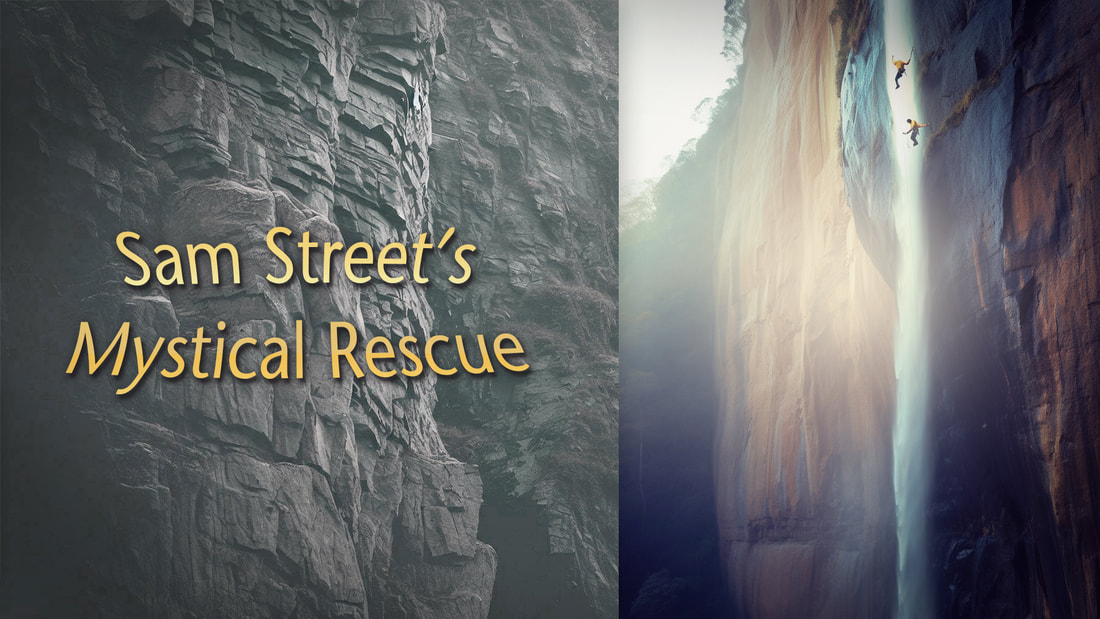
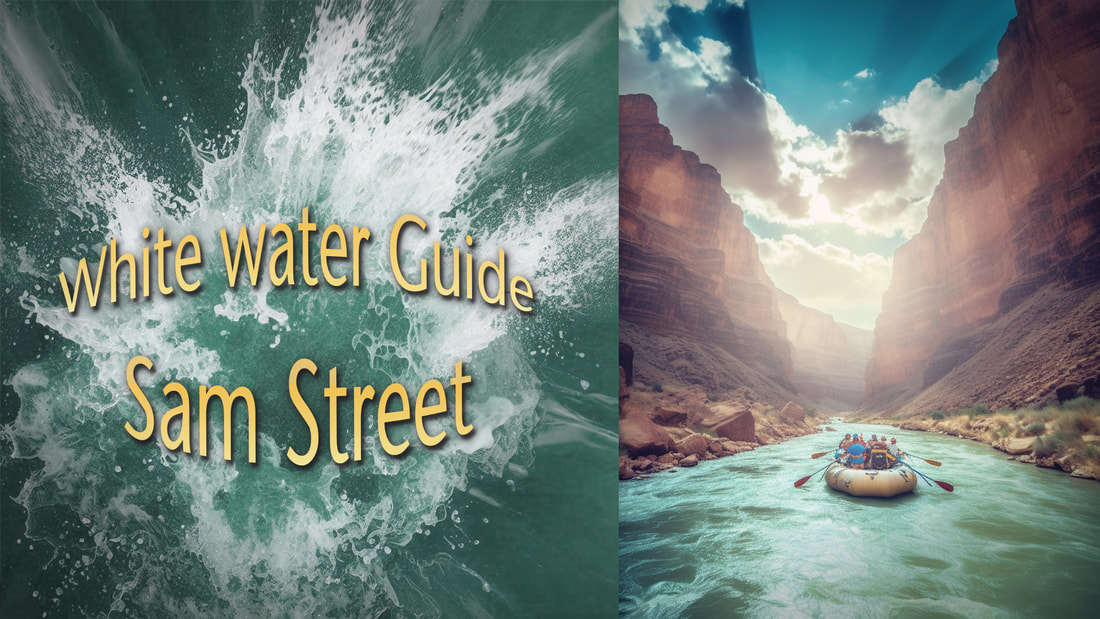
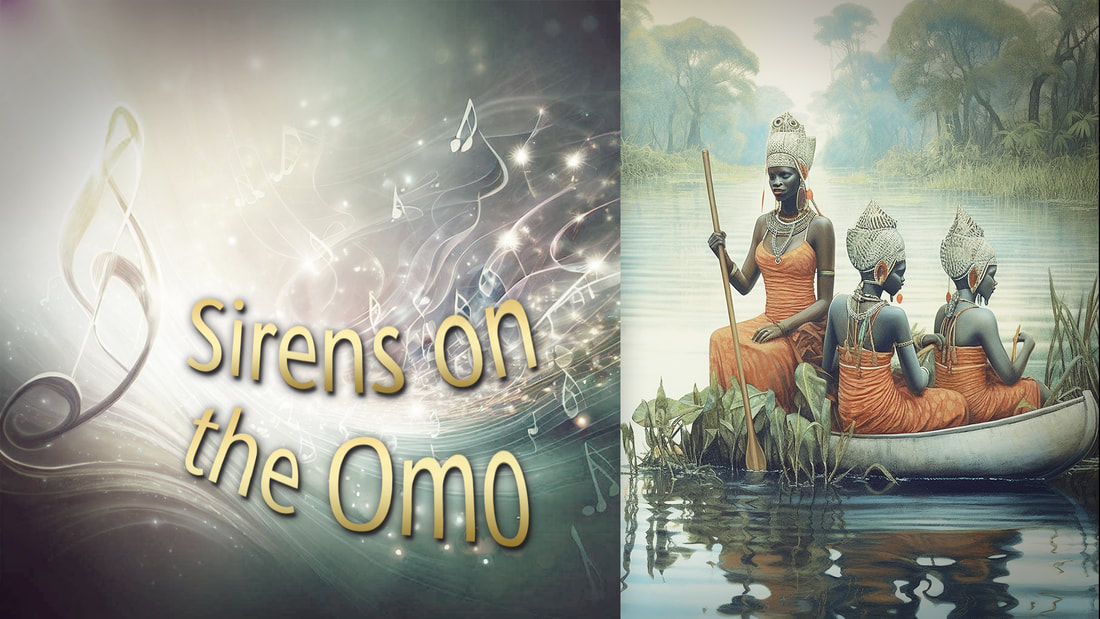
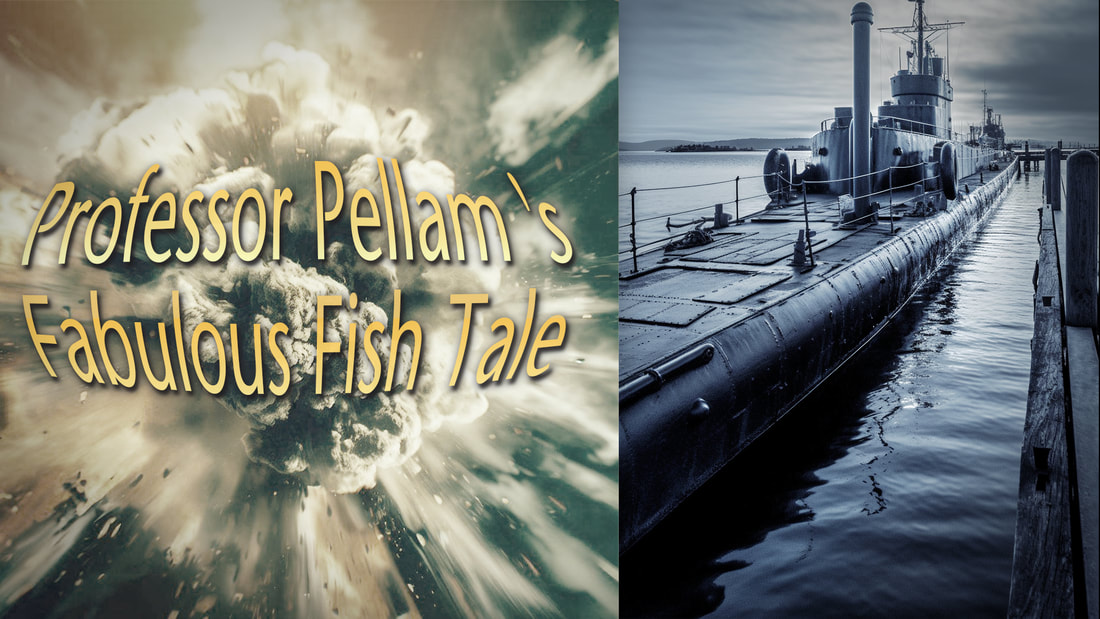
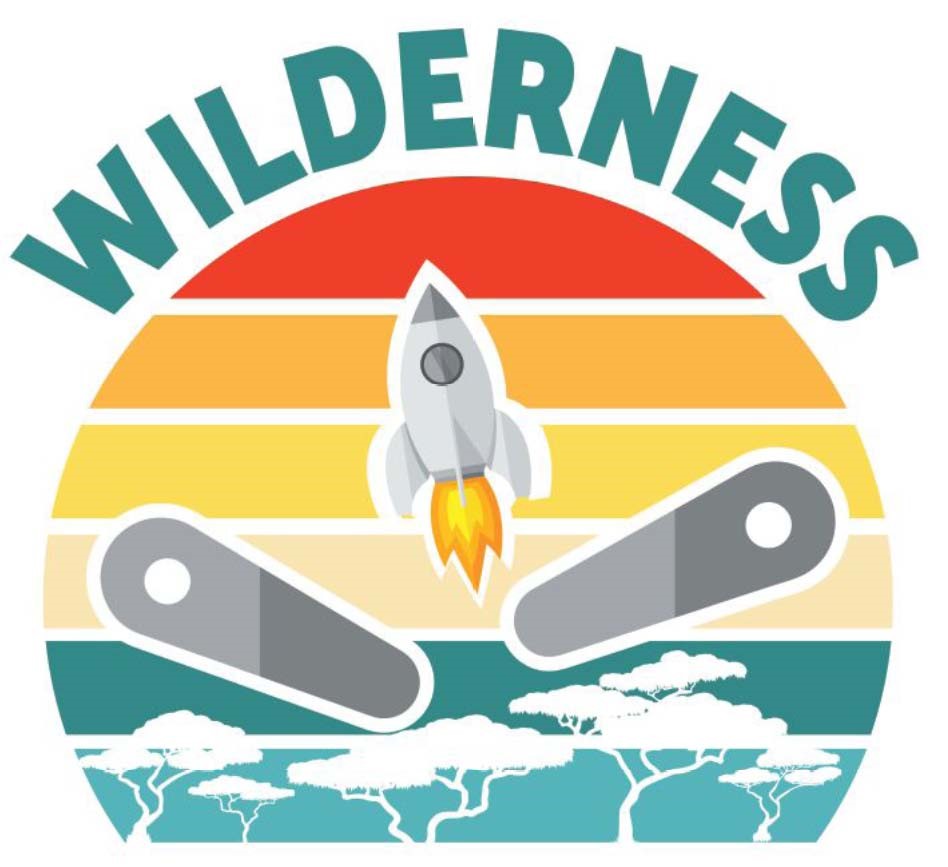
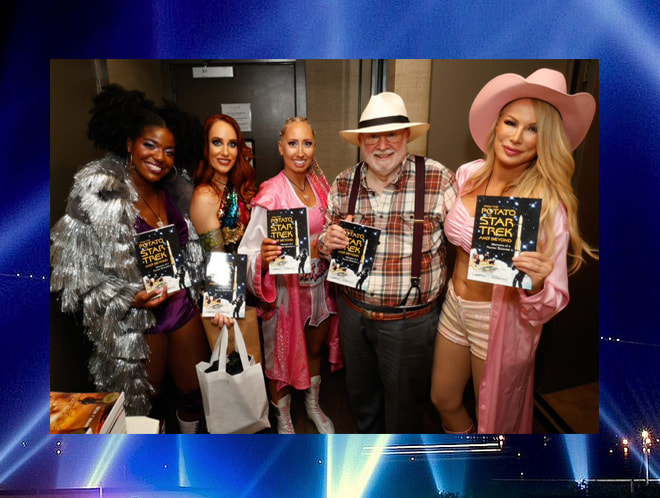
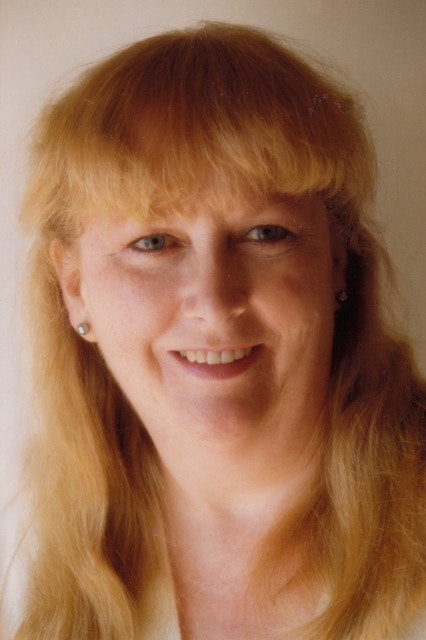
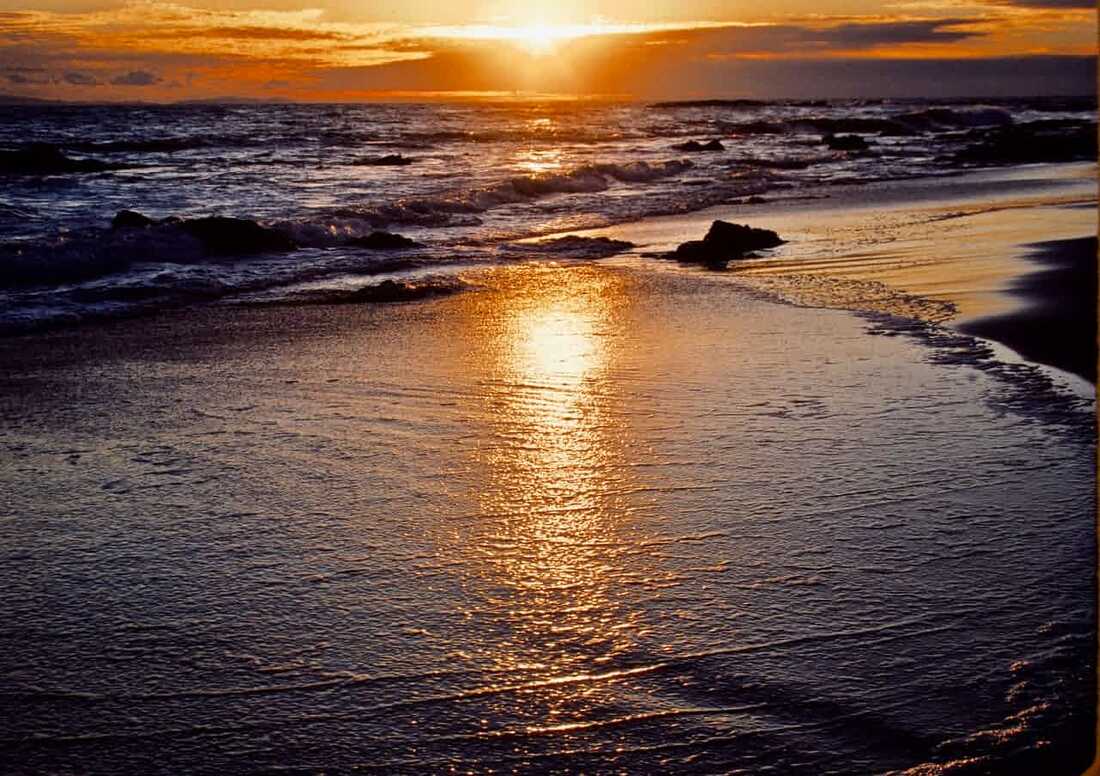
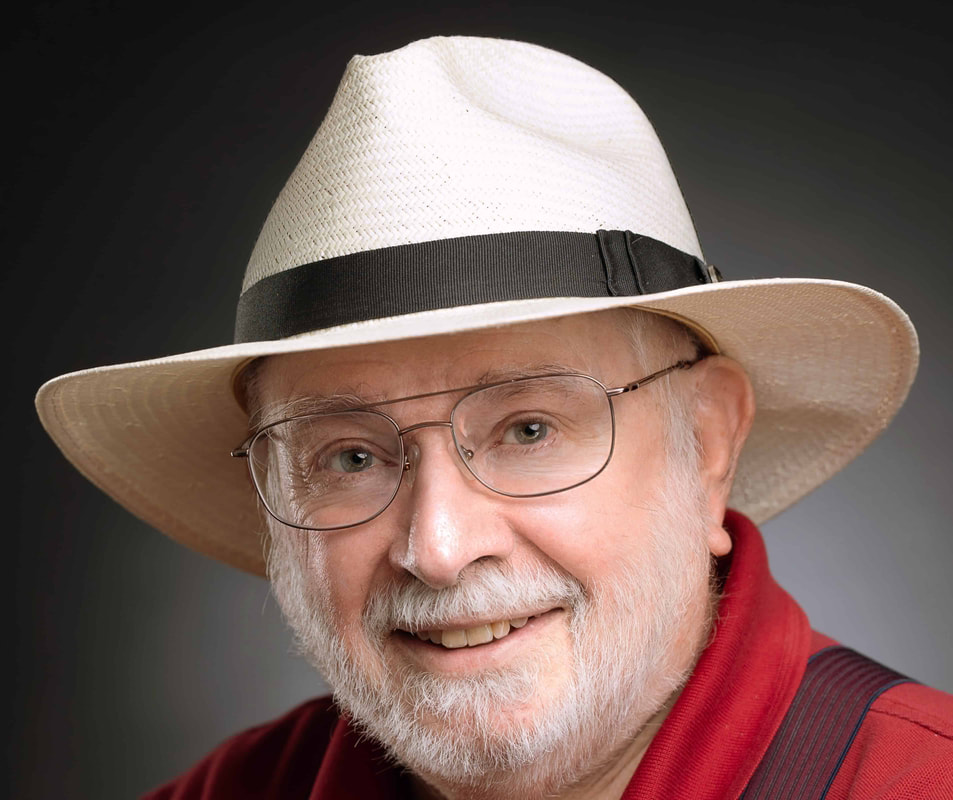
 RSS Feed
RSS Feed





